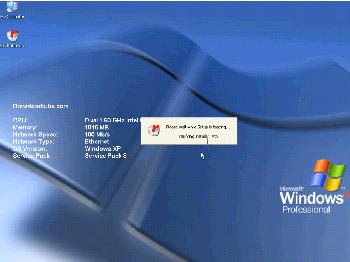Mestrelab Research Mnova 12.0
MestRe-C 4.8.6.0 Description: MestRe-C is a useful software package which offers state-of-the-art facilities for data processing, visualization and analysis of high-resolution NMR data, combined with a robust, user friendly graphical interface that fully exploits the power and flexibi. MestRe-C 4.8.6.0 Description: MestRe-C is a useful software package which offers state-of-the-art facilities for data processing, visualization and analysis of high-resolution NMR data, combined with a robust, user friendly graphical interface that fully exploits the power and flexibi. A top class software suite to process your analytical chemistry data Mnova is a multivendor software suite designed for combined NMR, LC/GC/MS and Electronic & Vibrational Spectroscopic techniques. The new version Mnova 14 is a major release incorporating many new features in most plugins.
Mestrelab Research S.L., developer and distributer scientific and laboratory informatics software, with a strong focus on research and development, has announced the release of Mnova 12.0, is the latest Nuclear Magnetic Resonance and LC/GC/MS data processing, visualization, simulation, prediction, presentation and analysis software package available on the market.
What’s new in Mnova 12:
- New User Interface control – Ribbon Menu
- 64-bit version is finally available!
- qGSD: Taking qNMR to its limits
- SMA: New features
Three new Products.
– Structure Elucidation: From NMR data to structure elucidation in a simple workflow
– Mnova Binding: Chemical Shift Perturbation analysis (CSP) for fragment-based drug discovery
– Mnova IUPAC Name: Names can be generated for drawn structures
Mestrelab Research Mnova Mnova is the natural evolution of our very popular application MestReC. However, it is more than a new version of MestReC. Whilst including all the NMR processing and analysis functionality present in MestReC, it is a completely new development and a completely new concept which will open up a whole new range of possibilities when storing and sharing data within organizations, changing the way in which scientists process and report NMR and LC/GC/MS data. Mnova has been designed to make NMR and LC/GC/MS both more convenient and more powerful, and to give the user improved results with minimum effort.
The program provides a variety of conversion facilities for most NMR and LC/GC/MS spectrometer and chromatogram formats and includes all the conventional processing, displaying, and plotting capabilities of an NMR program, as well as more advanced processing techniques with a very user friendly graphical interface.
Mestrelab Research S.L. Mestrelab Research S.L. is a leading software developer, based in Spain and founded in 2004 as a spin-off of the University of Santiago de Compostela. The company's mission is to develop software solutions which become the universal processing and analysis interface between analytical instrumentation and chemists.
Only for V.I.P
Mestrelab Research
Mestrec Nmr Software Free
Mestrelab Research, an innovative leader in developing top quality software tools for data processing and simulation in the field of NMR Spectroscopy, is a commercial spin-off from a research project called MestReC which started in the University Of Santiago De Compostela in 1996.
Mestrelab Research took a major step forward in 2007 with the release of Mnova, its multiplatform chemistry software suite focused on processing and analysis of NMR and LC/GC/MS data. To date, over 600 industrial companies and 550 Universities across the world have placed their trust in Mestrelab.
Mnova
Mnova,the flagship product of Mestrelab Research, is a NMR and LC/GC/MS data processing, analysis and presentation software package.
Mnova Suite
Mnova Suite is the Graphical User Interface (GUI) based multipage, multivendor, multi-technique and multiplatform analytical chemistry software suite designed as a container for different function-specific NMR and MS plugins. Scientists can select which specific plugins they want or they can purchase the comprehensive suite.
Mnova Plugins

Mnova NMR

- NMR processing, analysis, simulation and reporting.
- This vendor independent NMR software is ideal for1D and 2D NMR processing and analysis.
- Intelligent Peak Picking, Multiplet Analysis and Automatic Solvent Recognition.
- Automatic and paperless 1D / 2D assignments.
- Reporting in various journal formats.
- Complete automation of layout templates.
Mnova NMR Predict
- NMR spectra prediction from molecular structure and auto-assignments.
- Allows prediction of 1D (1H, 13C, 15N, 19F, 31P, 17O, 29Si) spectra.
- Prediction of HSQC spectra.
- Auto-assignments
- Choice of several different algorithms to run predictions, such as Neural Network, Increments methodology, CHARGE program, Best algorithm.
Mnova Verify
- Evaluation of analytical data and Automatic Verification of given structure.
- Mnova Verify with the innovative Automatic Structure Verification (ASV) and powerful behind the scenes algorithm helps judge compatibility of a user-proposed structure with the analytical data.
- Full processing of 1D & 2D NMR and LC GC MS data.
- Generation of theoretical data for the proposed structures.
Mestrec Nmr Software
Mnova MS
Simple, user friendly interface for processing vendor independent LC /GC/MS data by providing a common interface for different vendor data and automating all functionality(data display, integration, computational analysis).
Free Nmr Software
- Allows combining NMR and LC/GC/MS data in the same document.
- Easy generation of EMC (Mass Chromatograms) and UV traces.
- Auto analysis and reporting of TIC and UV peaks, structures, their selected Ion Chromatograms and Mol Match results using Mnova Scripting Capabilities.
Mnova qNMR
Mestrec Nmr Software Definition
Mnova qNMR engine leverages the powerful features of the Mnova Suite to arrive at optimal concentration or purity values. The software will process and analyze the data, select the multiplets most suitable for quantitation, integrate those multiplets as well as the reference multiplets (or use external reference values) to turn integrals into concentrations.
The whole process can be approached in full automation (for libraries or at the point of NMR acquisition) or as a simple tool with flexible reporting customization.
